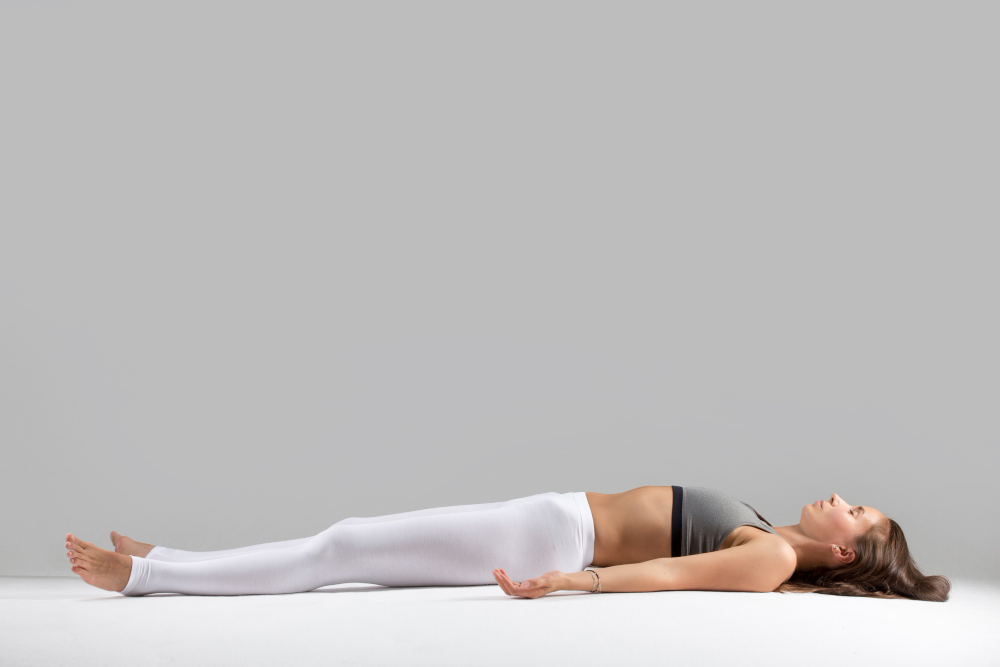In today’s fast-paced world, getting quality sleep has become a challenge for many. Stress, anxiety, and an overactive mind often disrupt our ability to fall and stay asleep. However, incorporating yoga for better sleep into your nightly routine can work wonders in promoting relaxation and enhancing sleep quality. Certain yoga poses and breathing techniques help calm the nervous system, reduce stress hormones, and prepare the body for deep rest. Let’s explore the best yoga poses and techniques to achieve restful nights.
The Connection Between Yoga and Sleep
Yoga is a centuries-old practice known for its ability to balance the mind and body. By engaging in gentle stretches, deep breathing, and mindfulness, yoga enhances melatonin production (the sleep hormone) and activates the parasympathetic nervous system, which promotes relaxation. Studies have shown that people who practice yoga regularly experience deeper sleep cycles, fewer sleep disturbances, and improved overall sleep quality.
Best Yoga Poses for Better Sleep
Quality sleep is essential for overall health and well-being. Yoga helps relax the body, calm the mind, and improve sleep quality. Here are the best poses to promote restful sleep.
1. Balasana (Child’s Pose)
Balasana is a deeply calming pose that helps relieve tension in the back, neck, and shoulders while promoting a sense of safety and comfort.
- Kneel on the mat and sit back on your heels.
- Extend your arms forward and lower your forehead to the ground.
- Take slow, deep breaths, holding the pose for 2-5 minutes.
This pose is excellent for reducing stress and preparing the body for rest.
2. Supta Baddha Konasana (Reclining Bound Angle Pose)
This gentle hip-opening pose releases tension from the lower body and encourages deep relaxation.
- Lie on your back and bring the soles of your feet together, allowing your knees to drop to the sides.
- Place your hands on your belly or by your sides.
- Breathe deeply and relax for 5-10 minutes.
This pose promotes inner calm and relaxation, making it ideal before bedtime.
3. Viparita Karani (Legs-Up-The-Wall Pose)
This restorative inversion improves circulation, reduces anxiety, and promotes a sense of calm.
- Sit sideways next to a wall and swing your legs up while lying on your back.
- Keep your arms relaxed by your sides.
- Breathe deeply and hold for 5-10 minutes.
By draining tension from the legs and calming the nervous system, this pose helps prepare the body for deep sleep.
4. Uttanasana (Standing Forward Bend)
A forward bend stretches the spine, hamstrings, and lower back while reducing stress and anxiety.
- Stand with feet hip-width apart and fold forward from the waist.
- Let your head hang loose and relax your shoulders.
- Hold the pose for 1-3 minutes while taking deep breaths.
This pose soothes the nervous system and quiets the mind, making it perfect for bedtime.
5. Savasana (Corpse Pose)
Savasana is the ultimate relaxation pose, allowing the body to fully unwind and enter a meditative state.
- Lie on your back with your arms and legs slightly apart.
- Close your eyes and focus on your breath.
- Stay in this pose for 5-10 minutes.
Practicing Savasana before sleep trains the body and mind to let go of tension, facilitating a smooth transition into deep rest.
Breathing Techniques to Promote Relaxation
Deep breathing is essential for reducing stress and calming the mind. The following techniques help promote relaxation, ease tension, and enhance overall well-being.
1. Nadi Shodhana (Alternate Nostril Breathing)
This technique helps balance the nervous system and relieve stress, promoting a peaceful state of mind.
- Sit in a comfortable position.
- Close your right nostril with your thumb and inhale through your left nostril.
- Close your left nostril with your ring finger and exhale through your right nostril.
- Repeat the cycle for 5 minutes.
This method calms the mind and prepares the body for sleep.
2. Bhramari (Humming Bee Breath)
A powerful breathing technique that reduces anxiety, quiets mental chatter, and promotes deep relaxation.
- Sit in a quiet space.
- Inhale deeply and exhale while making a humming sound like a bee.
- Repeat 5-7 times.
This technique soothes the nervous system and induces sleep.
3. Deep Belly Breathing
Conscious deep breathing lowers heart rate and signals the body to relax.
- Place one hand on your belly and one on your chest.
- Inhale deeply through your nose, allowing your belly to rise.
- Exhale slowly through your mouth.
- Repeat for 5-10 minutes.
Practicing this before bedtime enhances relaxation and prepares the body for rest.
Additional Tips for Better Sleep with Yoga
A consistent routine is essential for restful sleep. Along with yoga, simple lifestyle changes can enhance relaxation and improve sleep quality. Here are key tips to help you sleep better.
- Practice Yoga at the Same Time Every Night – Establishing a consistent routine helps regulate your body’s internal clock.
- Avoid Intense Workouts Before Bed – Gentle yoga is ideal, while vigorous exercise may increase alertness.
- Create a Relaxing Environment – Dim the lights, play soothing music, and use aromatherapy (lavender or chamomile) for a peaceful ambiance.
- Combine Yoga with Meditation – Practicing mindfulness or guided meditation enhances relaxation and sleep quality.
- Maintain a Sleep Journal – Track your progress and adjust your routine based on what works best for you.
Conclusion
Incorporating yoga for better sleep into your nightly routine can significantly improve your ability to relax and achieve restful nights. By practicing gentle poses, controlled breathing, and mindfulness, you can calm your nervous system, relieve stress, and set the foundation for deep, uninterrupted sleep. A consistent yoga practice not only benefits sleep but also enhances overall well-being and mental clarity.


Leave a Reply